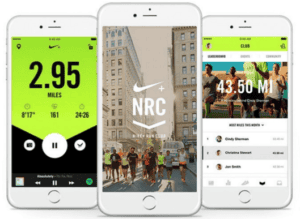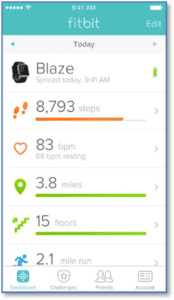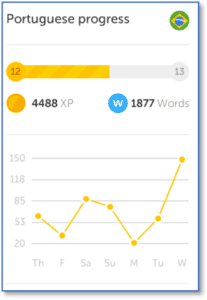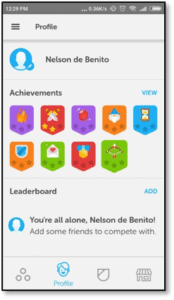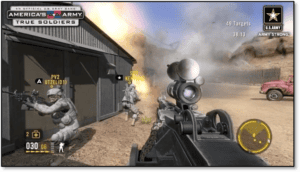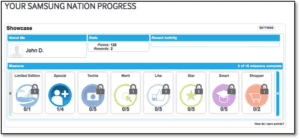AchieveUnite’s Gamifying your Channel Programs Series is a three-part series aiming to show how gamification can effectively change the way you engage, motivate, and activate your channel users.
I am often asked if gamification should be incorporated into an organization’s channel program. Clients are looking to engage and motivate their channel partners to achieve agreed upon goals. Even well-designed channel programs can often become dull or get stale because they’re not visually compelling or interesting to participate in.
Gamification can have a positive impact on even the best channel program by motivating channel users to participate more often and more deeply in an OEM’s program. Gamification has psychological motivating features as well as an element of ‘fun’ to what might otherwise be a flat, business-oriented user experience.
What follows is the first in a series of articles describing what gamification is, how to use it effectively and why it works to motivate results. Let’s start with what gamification is in the context of channel programs.
What is Gamification?
Gamification is the process of using game-like elements in business and marketing strategies to encourage participation. The Incentive Research Foundation describes gamification as, “the application of the elements of games that make users engage to drive interaction, competition, and other gaming behaviors in a non-game context.”
Gamification is a strategy that influences user behavior towards a specific action using gaming elements, while achieving real world business results. The goal is to motivate the action without or minimizing cash equivalent rewards.
Two Primary Types: Structural / Content
Structural Gamification
Structural gamification is the application of game-elements to propel a user through content with no alteration or changes to the content. The content does not become game-like; only the structure around the content does. In other words, structural gamification motivates a user to act by driving their internal motivation to achieve. This achievement can include badges, registration progress completion, earnings, percent to goal, or completing an activity before a deadline.
Consider your LinkedIn profile and how users are motivated to achieve 100% profile completion simply by adding elements like a progress meter. This type of gamification is commonly used to drive engagement and motivation amongst program participants.
Structural gamification examples include:
- Nike+ – The app tracks our running statistics and measures our progress towards goals. It compels us to go out and beat our record next time around.
- Fitbit – This wearable device tracks our exercise and steps. It motivates us to keep moving and hit our step goal for the day.
- Duolingo – This language learning app lets you set learning goals, pick up badges, and earn points as you achieve more language competency.
Content Gamification
Content gamification is the application of game elements by altering content to make it more game-like. Content gamification is best used when program goals align with the game’s result. This type of gamification can be simple or more specialized. A simple learning game might give the user a lottery ticket for a reward drawing if they correctly answer a single question. A more specialized game requires higher intellectual capital (both to play and create), and therefore is less flexible and has higher associated costs.
Complex content gamification examples include:
- America’s Army – A game created by the U.S Army for recruitment purposes. The game allows players to explore army careers, join discussion forums, and strategically tackle missions. This allows players to experience a game-like version of the job, engaging participants and making the administration and recruitment process more efficient.
- Samsung – This tech giant has ‘gamified’ their corporate website to foster engagement with their advocates and potential consumers.
Developing Your Gamification Strategy
Your gamification strategy only works if business and program goals are identified and align with the gaming elements used. To reap the most benefits from gamifying your promotions, administrators should:
- Provide participants with multiple ways to win. You should include both small and easy to win opportunities, as well as aspirational, higher value opportunities to keep users participating. More frequent winning minimizes cognitive effort on the part of the player, increasing the likelihood of engagement—if it’s not overdone. Too many ways to win can reduce the engagement levels of the channel partners, or conversely, drive up costs because you’re paying out for every tiny accomplishment.
- Allow most of your participants to win at least once. This is particularly true in the beginning of the program to enable initial participation. This does not mean everyone should be a “grand prize winner” because that would be costly and inefficient. Instead, set up your payout logic so that smaller prizes are more frequent, with larger prizes being rare. This keeps program participants motivated and ensures they remain engaged since they know a prize is likely.
- Effectively communicate program rules. Program intent and rules should be communicated initially and then be easily accessible. Misunderstandings frustrate and therefore disengage and demotivate, which is directly counterproductive to gamifying your workflow. Effective communication can be accomplished via email, access to PDFs, landing pages describing the games, or directly within your program environment. Some channel management platforms offer gaming modules, allowing program administrators to easily add game content to the program.
- Provide a clear progress path. Make the initial task simple to get the user engaged. Then add more complex tasks as the user becomes acquainted with the process.
- Make your rewards workflow efficient and unique. Whether the rewards are monetary or non-monetary, provide quick feedback and automated reward delivery to improve engagement and to build trust in your program. Remember rewards can be monetary or non-monetary – gift cards or access to enhanced content, exclusive training, or other relevant materials. Flexible rewards make your program appealing to a broader audience.
- Make your interfaces and graphics intuitive and aesthetically pleasing. If a user guide is required, the process is too complex. The interface must be well designed and easy to use. The graphics should be visually engaging and fun. Today’s users are accustomed to well designed, engaging online experiences.
Conclusion
When used appropriately, leveraging gamification within your channel program can be highly effective. Your strategy should be customized to fit your specific program, your goals, your promotions, and your specific channel. Best practice includes both structural and content gamification. Combining both delivers the solid engagement and achievement of your channel performance goals. In our next article, we will discuss how to use gamification in the most effective manner.
Need help taking your channel strategy to the next level? It’s our sweet spot. Reach out to us today!

